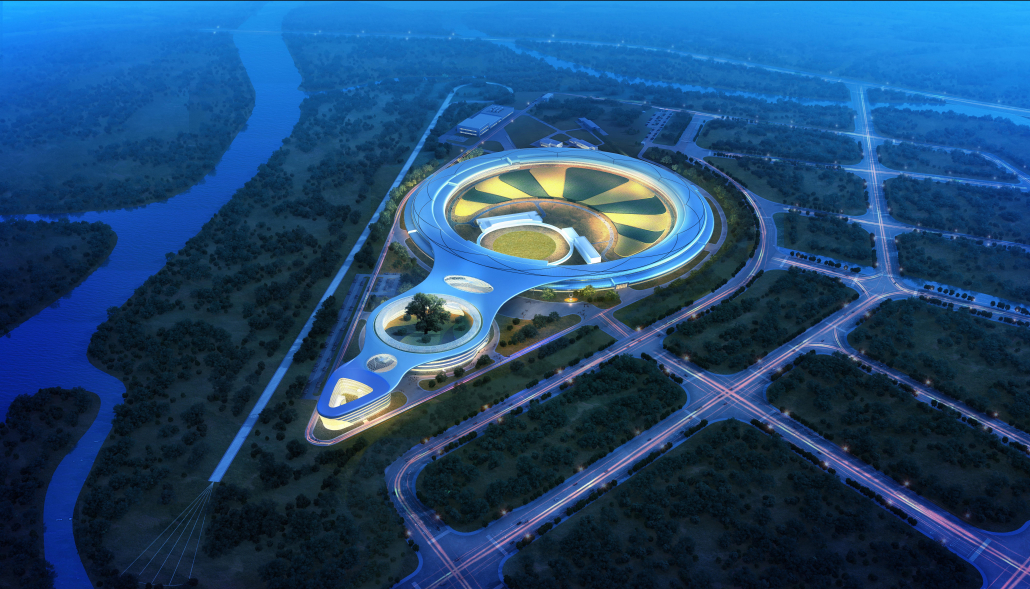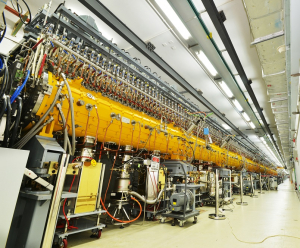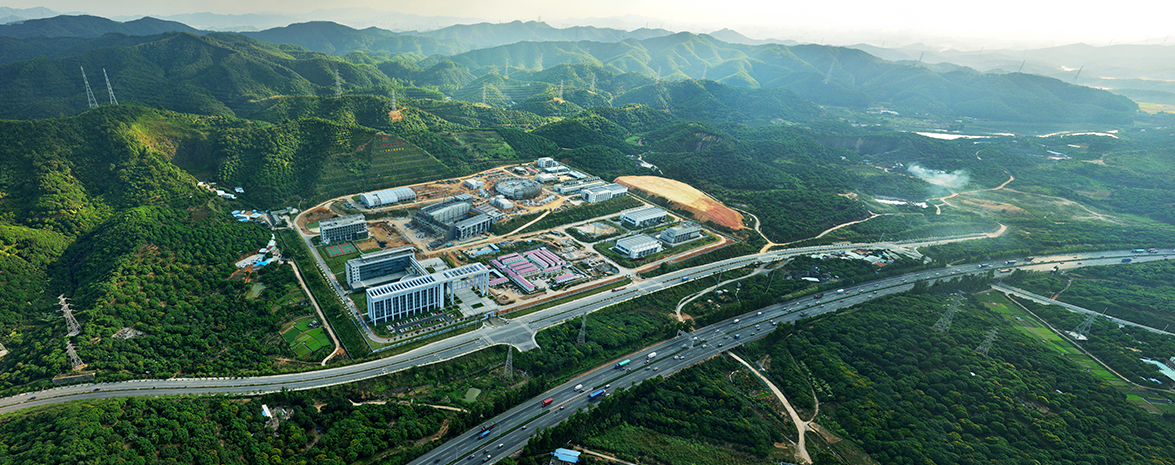
Research and Medical Physics Landscape in China
-

High Energy Photon Source building, 3D model, areal view HEPS IHEP
A view from a relatively small, yet global engineering company, with European roots in developing control-systems for particle accelerators may be specific. We are fortunate to have a daughter company in China, which is staffed by experienced and talented Chinese engineers and run highly professionally by my friend Ye Jian. Before our daughter existed, we had to commute to Beijing on the ultra-red-eye flights from Europe a lot more often than today.
Photon and Neutron Sources, Tokamaks and Colliders

The Linac Tunnel at China Spallation Neutron Source
CSNS
- At 6 GeV, the Beijing High Energy Photon Source (HEPS) is the first high-energy diffraction-limited storage ring (DLSR) light source to be built in China. It is being built by the Institute of High Energy Physics (IHEP) at the Chinese Academy of Sciences and is China’s largest laboratory for the study of particle physics.
- The China Spallation Neutron Source (CSNS) in Dalang Town, Dongguan City, the world’s fourth pulsed spallation neutron source. It includes a rapid circling synchrotron, a powerful linear proton accelerator, a target station and three neutron instruments. Another facility, the Southern Advanced Photon Source (SAPS), is planned beside CSNS.
- IHEP will also participate in the construction of the Circular Electron Positron Collider (CEPC), its planned circumference of about 100 kilometres. In the initial stage, CEPC will be an electron-positron collider that could be later upgraded to a high-energy proton-proton collider, with particle-creation potential far beyond the Higgs boson. In June 2020 IHEP invited our company to participate in the CEPC control system workshop.
- Detailed engineering is beginning for the next superconducting tokamak nuclear fusion reactor in China, the Chinese Fusion Engineering Test Reactor (CFETR). We are already known for our engineering at both the operating organisations, the Hefei Institute of Physical Science (HIPS) and ASIPP (the Institute of Plasma Physics), the latter knowing us from ITER.
As Cosylab also has a long history in control-systems and device integration, together with machine protection, timing, network and data-collection, we are looking closely at several of the Chinese advanced light-source (ALS) facilities, among them HALS and SHINE.
- HALS (Hefei Advanced Light Source) is to be become one of the most advanced 4th Gen synchrotron radiation light sources in the world, incorporating a Soft X-Ray diffraction-limited storage ring at the National Synchrotron Radiation Laboratory (NSRL).
- The Shanghai high repetition rate XFEL and Extreme light facility (SHINE) is a high rep-rate hard X-ray FEL facility. SARI-CAS (Shanghai Advanced Research Institute) is responsible for the accelerator section of SHINE, while Shanghai-Tech University is in charge of the beam lines and experimental stations.
- China Academy of Engineering Physics (CAEP) is planning a new beamline control system to the cold neutron scattering hall at No.2 Institute for the USANS project.

Areal view of China Spallation Neutron Source
Chen Yanwei, CSNS
The Medical Physics projects
The domain of medical physics is rapidly expanding in China, especially in particle therapy, encompassing both proton and ion radiotherapy installations.
- HIMM in Wuwei is China’s first heavy-ion medical machine with a cyclotron injector and a synchrotron built independently by the Institute of Modern Physics (IMP CAS) in Lanzhou, Gansu Province. IMP CAS is currently actively working on the second heavy-ion installation HIMM2 at Lanzhou (HIRFL) which will also provide intense ion beams for nuclear physics, atomic physics and applicative-research sciences. A third heavy-ion medical system, HIMM3, is being planned for the Putian location.
- The Shanghai Advanced Proton Therapy facility (SAPT) is located at the Ruijin Hospital and is now undergoing the treatment terminal integration and facility testing for the NMPA certification. It is expected to begin clinical treatment in 2021. The project is operated by the Shanghai APACTRON Particle Equipment Co., Ltd and SINAP.
- Hefei Ion Medical Center (HIMC) is conducting two PT projects, with one of them being developed by the HF CIM company. HF CIM is, in fact, a JV between the Institute of Plasma Physics (ASIPP) and the Hefei local government. The second project is the first fully operational proton-therapy centre in China, with an installed Varian cyclotron medical machine.
China in the fast lane
In its great leap forward in science, China is intensively planning a multitude of smaller initiatives and several large projects that we can describe as “going a step further” and are, arguably, grand in scale and ambition.
China, seemingly, just does it, Nike-style.
About the author
Dr Rok Hrovatin is one of Cosylab’s most senior advisors and an expert in industrial-physics, quality systems and standards, and control-system solutions for research and medical physics.
